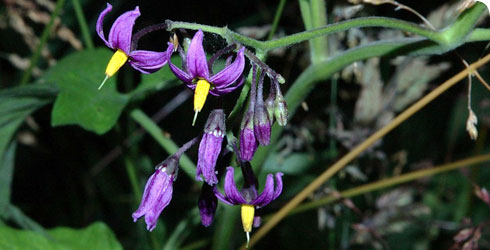Solanum dulcamara
Solanum dulcamara is a common European weed called woody nightshade, bittersweet or douce amère. It grows in hedgerows, gardens and wasteland throughout Europe and spreads via underground stems.
It has been used in folk medicine across Europe for hundreds of years. But Michel Felix Dunal, who worked on Solanum in the 1800s, realised that many of the powers attributed to this plant were spurious.
Woody nightshade was used to treat skin conditions, circulatory conditions and breathing problems like asthma. It was included in the official British Pharamcopeia until 1907, but was taken out of later editions.
It carries the bacterium - Ralstonia solanacearum – that causes brown rot in potatoes. The disease can be spread to potatoes from infected woody nightshade growing on riverbanks if the river water is used to irrigate potato fields.
Species detail
-

Taxonomy
Solanum dulcamara leaves vary in size and shape. So, what should you look out for?
-

Distribution and habitat
Solanum dulcamara is found on most continents and favours open spaces. It likes disturbed soil and can establish itself from just a piece of stem thrown on the ground. Find out more.
-

Biology
Bees help pollenate Solanum dulcamara flowers. Find out how.
-

Behaviour
Solanum dulcamara harbours the bacterium that causes brown rot in potatoes. The bacterium fails to harm the woody nightshade but can devastate potato crops.
-

Conservation
Find out about the conservation status of this weed.
-

References
Get reference material for Solanum dulcamara
Images
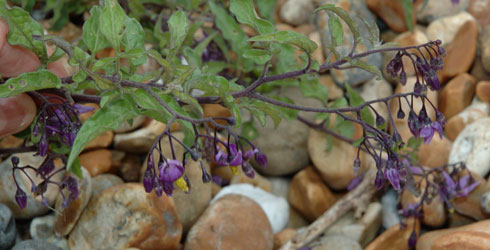
Solanum dulcamara is found in open areas such as sea shores.
© S Knapp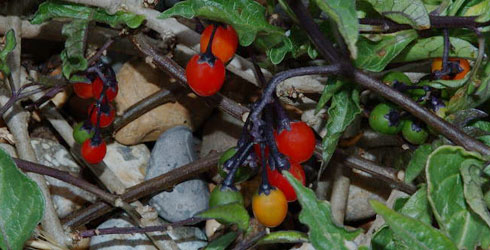
Solanum dulcamara fruits, bright red when ripe.
© S Knapp
Solanum dulcamara being pollinated by a bumblebee.
© S Knapp
Solanum dulcamara common European weed called woody nightshade, bittersweet or douce amère.
© S Knapp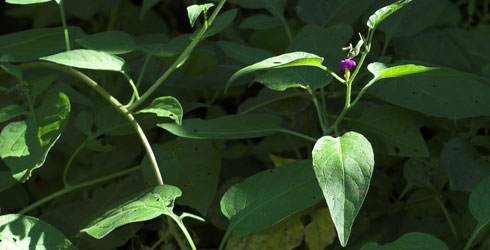
Leaves of Solanum dulcamara.
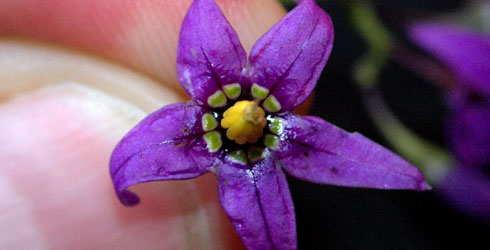
A flower of Solanum dulcamara.
About the author

Dr Sandra Knapp
Merit researcher in botany, focussing on the taxonomy of the nightshade family Solanaceae.
A word from the author
'Solanum dulcamara is one of a group of about 50 species for which I am doing an in-depth taxonomic treatment. It is one of only four in this group that occur in the northern hemisphere and is really interesting because of its huge geographic range and its incredible variability.'
